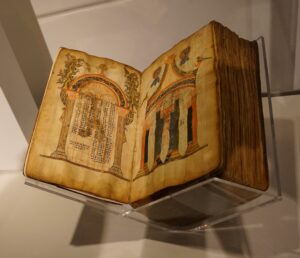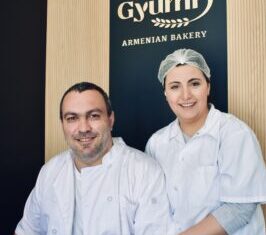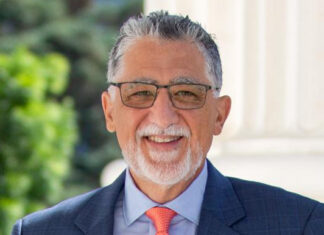By Aram Arkun
Mirror-Spectator Staff
NEW YORK — Hrag Varjabedian began his professional career as an electrical engineer, but when he volunteered for the Zoryan Institute’s Armenian oral history project, he found his true calling. Forty- years-old, he went back to school at the University of Wisconsin-Madison in cultural anthropology and obtained a doctorate after 10 years. He tried at first to focus on the stories of the survivors of the Armenian Genocide, but encountered a serious problem — there was practically nobody left to turn to for follow-up questions. Instead, he changed his topic. On November 8 at the Middle East and Middle Eastern American Center (MEMEAC) of the Graduate Center of the City University of New York, he spoke about what he ended up writing — a tome on The Poetics of History and Memory.
Dr. Anny Bakalian, the energetic associate director of MEMEAC who regularly organizes interesting and serious lectures on Armenian topics, introduced Varjabedian succinctly. Varjabedian went on to present a dense, detailed and informative talk accompanied by slides of quotations, illustrations and movie excerpts. He was baffled initially to find out why Armenian-Americans, even some only one- ourth Armenian, strove so hard to keep the Genocide narrative alive after all these years. He explained his wonderment to this journalist: “They had the least to do with nationalism, and yet did the most to bring these issues to the public sphere. Nobody in Armenia was doing something similar.” To better understand the reason, he decided to study two different Diasporan- Armenian communities — those of Lebanon and the United States — and the Armenians of the Republic of Armenia.
Varjabedian began his talk with a review of the theoretical understanding of memory, so elusive and complex in nature. He examined the relationship of individual and collective memory, and their connection to history, drawing upon the works of Bronislaw Malinowski, Maurice Halbwachs, Susan Crane, Amos Funkenstein, Roger Bastide, Pierre Nora and Yosef Hayim Yerushalmi. Among other things, scholars noted that the ruptures caused by the destruction of the social organization of a group through events such as genocide also have a destructive effect on collective memory. Varjabedian’s own work is on individual efforts to perpetuate narratives about the Armenian Genocide. He was interested in understanding the way people give meanings to the past to form their identities, not in the use of the past by political and intellectual elites.
The Armenians who ended up in Lebanon or in the Republic of Armenia were able to make up for the ruptures in social structure and historic continuity created by the Armenian Genocide through a nationalization process. They were exposed to Armenian culture and the Armenian language on a daily basis. A new framework and continuity was created through collective institutionalized commemorative activities which could be used by individuals formulating their own identities. Personal stories did not enter into the Armenian Genocide narrative in its national or collective form in these places. Instead individual narratives were used as a means of rebellion against paternal, national or state authority.
In the United States, on the other hand, commemoration of the Genocide was not institutionalized in the same fashion, and there was no dominant Armenian nationalization project. Individuals, sometimes isolated from larger Armenian communities, had to undertake the effort of historicizing their past on their own. Here personal experiences of the children and grandchildren of survivors were placed within the context of the stories of their survivor ancestors. These offspring attempted to deal with the ruptures of the Genocide by creating continuities through mythopoeia, a fictional mythology.








